First Workshop: International Coordination for Spaceborne Synthetic Aperture Radar Data Acquisition, Processing and Analysis for Earth Science and Applications
30 May – 1 June, 2018 | Beckman Institute, California Institute of Technology
The first workshop of the International Coordination Group for Spaceborne SAR Missions saw the establishment of the ad-hoc group. It provided a much-needed coordination mechanism for the international civil agencies operating and developing SAR satellite missions. The workshop focused on the following objectives:
- Identify new trends in spaceborne SAR missions (e.g. bistatic, constellations of SAR’s, micro-SAR’s).
- Identify areas where coordination of data acquisitions can lead to improved science processing efficiency (i.e., common areas targeted for campaigns or disjoint areas where multiple coverage would be redundant.
- Explore ways to facilitate search of available data and requests for future data acquisition particularly for immediate need due to natural hazards (earthquakes, volcanic eruptions, floods, landslides, tsunamis, etc.) and for future field campaigns and utilization planning, and for other applications. Identify best practices and lessons learned related to SAR data acquisition coordination initiatives like the WMO Polar Space Task group SAR Coordination Working Group (a very successful SAR mission coordination body for polar regions) and Charter on Space and Major Disasters.
- Identify areas where standards or common developments for data processing including data format standardization or Analysis Ready Data (ARD), product quality assurance (e.g. cross validation) and for data manipulation/fusion would be beneficial.
- Identify computational efficiencies and challenges in achieving the mission objectives.
- Identify challenges and opportunities in leveraging defense, civilian, commercial, and science systems to achieve users’ objectives (science and applications).
- Identify organizational challenges in achieving coordination among agencies.
- Identify recommendations needed to acquire spatially and temporally dense SAR data sets.
- Discuss interest and value in having common test sites, both distributed and with corner reflectors, to calibrate all SAR systems with common references.
- Discuss how to maximize scientific/user exploitation of present and planned SAR missions (open data for scientific research, expanded ground receiving stations, …). Identify any regulatory challenges.
- Discuss the desirability of coordinating future missions and the role of the commercial sector to achieve future scientific and user objectives.
- Develop a roadmap for addressing the above challenges and development areas.
To achieve these objectives, three working groups were formed, each focusing on a specific subset of the workshop objectives. These three groups continued to collaborate following the workshop, discussing the topics of
- Group A: Present and Future Data – Visibility and Access (L0-L2), now WG1
- Group B: Future Imaging Systems – Goals, Plans, Challenges and Opportunities, now WG2
- Group C: Data Exploitation – Cal/Val, Fusion and Assimilation (L3-L4), now WG3




